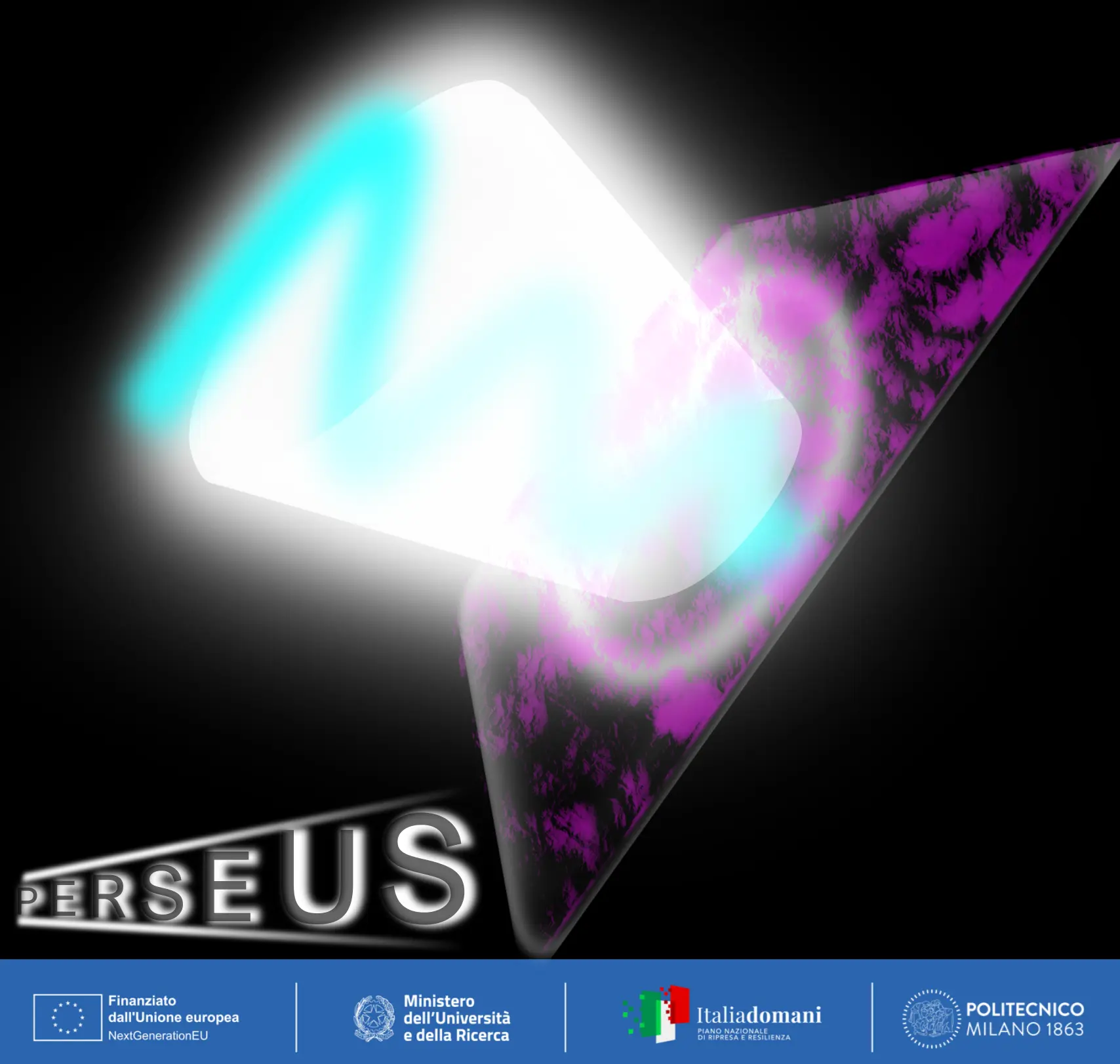Start
01/03/2025
End
29/02/2028
Status
In progress
PERSEUS
Start
01/03/2025
End
29/02/2028
Status
In progress
PERSEUS

Pulse Engineered cone-suRface-shaped for Study chargE-diffusion with Ultrafast Spectroscopy
Tracking excitons (electron-hole bound pairs) transport in real time at the nanoscale has become crucial to explain the performance of advanced technology devices typically exploit perovskites and organic molecules that are particularly suited for light harvesting or photonics applications.
The characterization of the exciton diffusion in these systems presents several difficulties such as:
- Femtosecond (fs) temporal resolution able to detect the exciton formation/migration process.
- Nanometer (nm) spatial accuracy comparable with the typical exciton lengths and propagation distances (tens of nanometers).
- Broad spectral detection window to probe possible exciton interactions and charge carriers.
Currently, exciton diffusion has been studied with sophisticated Transient Absorption and photoluminescence spectroscopy techniques where the spatial and temporal resolution are sufficient to capture the exciton dynamics. However, the assignment of signals from exciton interaction is hindered by single wavelength acquisition. Moreover, high laser intensities adopted in these methods impose some experimental restrictions: in biological systems by causing photodamage and in chemical systems, by causing the detection of many-body effects.
In this context, space-time engineering of optical laser pulses has come into the spotlight by showing an unprecedent control of light properties. Recently, it has been shown how to shape broadband pulses by maintaining their temporal duration under 20fs. Here, space-time shaping is obtained by fixing a relation between the space and time coordinates able to dynamically probe the exciton diffusion. Furthermore, recent application of structured light in spectroscopy demonstrates that such pulses permit low fluence experimental condition by extending their applicability also to fragile samples.
In this framework, PERSEUS project aims at developing an innovative methodology to resolve exciton diffusion processes along space, time, and frequency coordinates by exploiting an ultrashort structured pulse as a probe in a TA spectroscopy experiment.
In this project, such method will be used to study emerging non-fullerene acceptors (NFA) molecules that are considered as the most promising materials for innovative organic photovoltaic (OPV) technologies by showing a certified efficiency over 19%.
Open questions:
Although some properties of NFA are documented in literature, one major question remains open: how the morphology and exciton interaction affect the exciton/charge transport property of the system?
The ultimate ambitious goal of this project is to define an innovative design to characterize the fundamental properties of optoelectronic materials and technologies and link them to their performances.
Objectives:
- Simulation, generation and characterization of space-time shaped broadband-ultrashort laser pulses.
- Development of a new experimental apparatus denoted as Multidimensional Ultrafast Spectroscopy for Exciton-diffusion (MUSE) which has the same design of a time-resolved transient absorption experiment with structured probe pulse.
- Multidimensional (space, time, spectrum) characterization of the exciton diffusion process in organic photovoltaic materials.